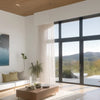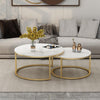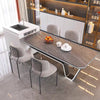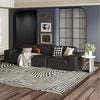Key Tips for Choosing a High-Quality Sofa in Malaysia
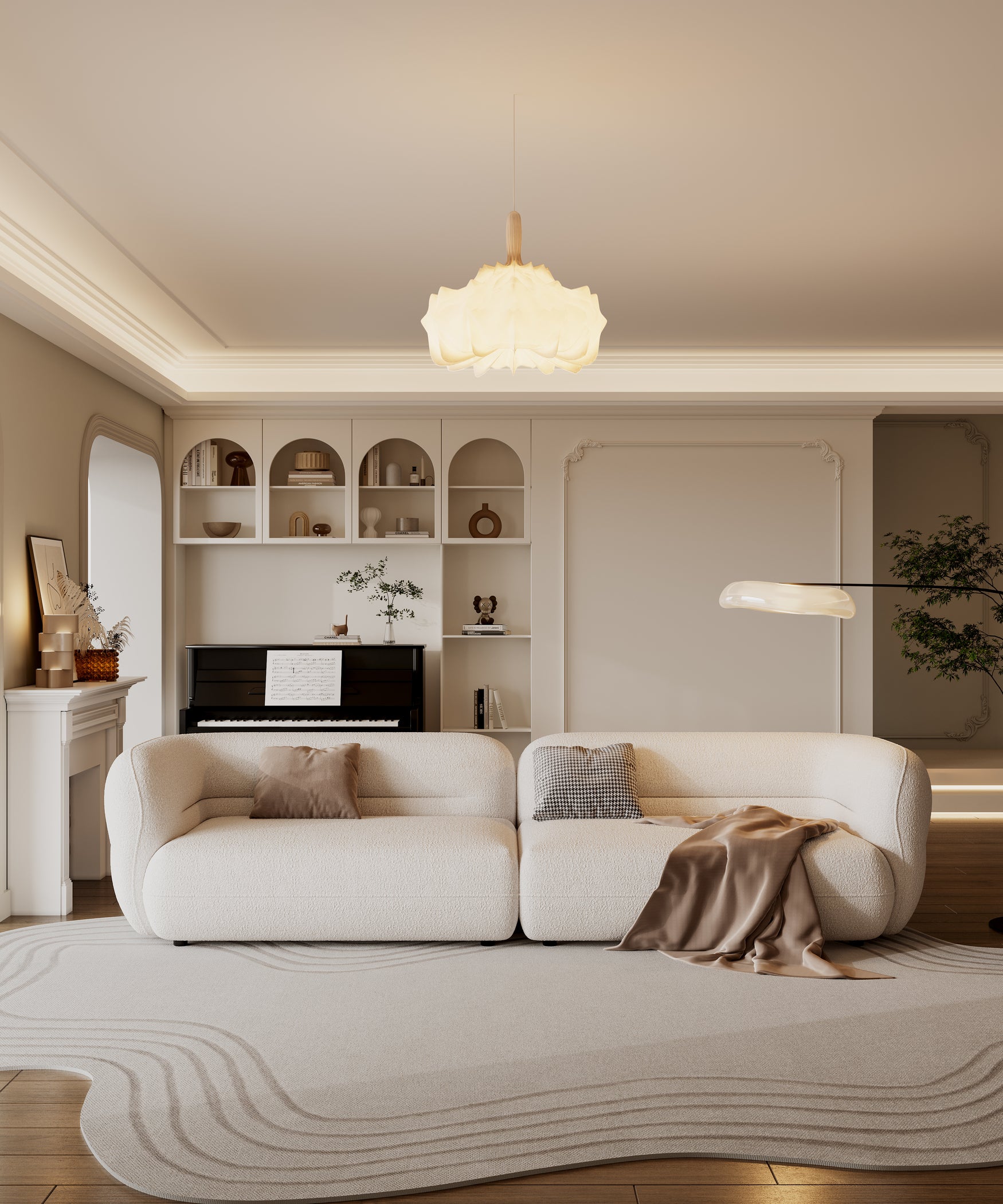
| Table of Contents |
|---|
Introduction
In Malaysia, choosing the right sofa is essential for creating a comfortable and inviting home. A good quality sofa not only adds to the comfort of your living space but also reflects your family's lifestyle and taste. However, with the wide variety of sofas available in the market, many consumers may feel unsure about where to start. This article is designed to provide Malaysian consumers with expert advice on how to identify and select a high-quality sofa, ensuring that your investment is worthwhile. It will meet your aesthetic needs while also being durable and practical in the long run. By learning the right selection techniques, you can elevate the living experience for both you and your family.
Key Factors in Identifying a Quality Sofa

When selecting a quality sofa, understanding the importance of materials and structural integrity is crucial. Below, we’ll dive into how to choose the right materials and assess the structural quality to ensure your sofa is both attractive and durable.
Material Selection
-
Frame Material:
- Hardwood (e.g., oak and beech): Provides excellent stability and durability, ideal for long-term use, though it can be more expensive and heavier.
- Metal: Offers high strength and is easy to maintain, suitable for modern designs, but may lack the warmth of traditional wooden frames.
-
Upholstery Material:
-
Leather: Durable and easy to maintain, with a look that improves over time, though it requires care to avoid scratches.

TIPs: The main difference between full-grain leather and top-grain calfskin leather lies in their origin and treatment:- Full-grain leather: Derived from the top layer of animal hide, retaining its natural texture, scars, and pores. It is the most durable type of leather. Since it is unpolished, it maintains the leather’s natural characteristics, like breathability and softness.
- Top-grain calfskin leather: Specifically comes from the top layer of calf hide, which is usually thinner and softer. Due to its finer texture compared to adult cowhide, it becomes smoother and has a more refined feel after treatment, often used in luxury leather goods and apparel.
Overall, full-grain leather emphasizes natural texture and durability, while top-grain calfskin is known for its softness and fine texture.
-
Fabric (e.g., microfiber, linen): Offers high comfort with a wide range of options, though it may require more maintenance.
-
Synthetic Materials (e.g., acrylic, nylon): Resistant to wear and tear, suitable for high-usage environments, though they may lack breathability.
-
-
Cushion Filling:
- Foam: High-density foam retains its shape and comfort over time, while low-density foam may lose support quickly.
- Natural Fillings (e.g., down): Provides exceptional comfort but requires regular maintenance to maintain shape and comfort.
Evaluation Tips:
- Polyester Fiber: A synthetic fiber typically made from petroleum-based chemicals, known for its durability, wrinkle resistance, and tensile strength, commonly used in textiles and fillings.
- 20 kg/m³ Polyurethane Foam: This refers to polyurethane foam with a density of 20 kg per cubic meter. The higher the density, the firmer the foam. This type of foam is used in furniture padding to provide soft support.
- Fire-retardant Lining: Polyester Filling: A lining material containing polyester filling, treated to meet fire safety standards, enhancing the safety of furniture.
- 35 kg/m³ High-Resilience Polyurethane Foam: With a density of 35 kg per cubic meter, this foam has high resilience, meaning it quickly returns to its original shape after use. It's typically used in high-end furniture cushions for better support and comfort.
Structural Quality
- Joinery Techniques: Quality sofas often use mortise-and-tenon joints or reinforced with screws rather than relying solely on nails or glue, providing extra stability and durability.
-
Spring System:
- Eight-Way Hand-Tied Springs: Though costly and labor-intensive, this system offers superior support and comfort, commonly found in high-end sofas.
- Sinuous Springs and Webbing Systems: More affordable and easier to install, suitable for budget-friendly options, but can still provide good support when paired with quality padding.
By thoroughly understanding these materials and structural characteristics, consumers can make more informed decisions when choosing a sofa that meets both aesthetic and functional needs. Ensure to consider these factors when selecting a sofa to guarantee that your purchase is both stylish and practical, meeting the long-term demands of family use.
Comfort Evaluation
When selecting a sofa, comfort is a key consideration. This section explores the firmness and support of sofa cushions, the role of sofa pads in enhancing comfort, and provides a detailed overview of the characteristics, pros, and cons of Southeast Asian woven cushions, palm fiber cushions, and latex cushions. It also compares cushion materials used in high-end versus budget brands.
Cushion Firmness and Support
-
Cushion Firmness:
- The firmness of the cushion directly impacts comfort and support. High-density foam cushions, known for their durability and support, are ideal for sofas that will see frequent use. Low-density foam offers a softer feel but may lose its shape more quickly under heavy use.
-
Support:
- Good support is essential not just for comfort but also for the user's health. High-resilience foam, prized for its excellent elasticity and quick recovery, is considered the top choice for sofa cushions. This foam provides superior comfort and long-lasting support.
- Memory foam, while excellent at conforming to body shape and reducing pressure points, can leave indentations due to its slower recovery time.
-
Role of Sofa Pads:
- High-quality sofa pads can significantly enhance cushion comfort and support. For instance, adding high-density foam inserts or using a particle board base can effectively prevent cushion sagging, maintaining shape and ensuring even weight distribution.
Southeast Asian Woven Cushions, Palm Fiber, and Latex Cushions
-
Southeast Asian Woven Fabric Cushions:
- Pros: Good ventilation, suitable for tropical climates, comfortable feel, and carries regional cultural characteristics.
- Cons: May not be as durable as modern materials and requires regular maintenance to retain its shape and comfort.
-
Palm Fiber Cushions:
- Pros: Made from natural materials, environmentally friendly, offers good support and moderate firmness, suitable for heavier users.
- Cons: Poor breathability, may mildew in humid environments, and has a shorter lifespan.
-
Latex Cushions:
- Pros: Made from natural rubber, offering excellent durability and elasticity, providing superior comfort and support. Latex is naturally resistant to dust mites and mold, making it ideal for allergy sufferers.
- Cons: Higher cost and heavier weight, which may not be suitable for frequently moved furniture.
Comparison of Cushion Materials in High-End vs. Budget Brand Sofas
- High-End Brands: Typically use latex, high-density foam, or premium down, focusing on sustainability and longevity.
- Budget Brands: Often use low-density foam or synthetic fillings to keep costs down, which may provide initial comfort but lack durability over time.
Comparison:
High-Resilience Polyurethane Foam versus High-Resilience Sponge (commonly also referred to as high-density foam) differ in their uses and characteristics:
-
High-Resilience Polyurethane Foam:
- Features a more complex manufacturing process, offering greater elasticity and quicker recovery.
- More durable, making it suitable for cushions and backrests in high-end furniture, providing superior comfort and support.
-
High-Resilience Sponge:
- Generally refers to high-density foam, which also offers good elasticity and support, though its rebound speed and durability may not match that of high-resilience polyurethane foam.
- Suitable for mid-range furniture, more cost-effective, but slightly lower in comfort and durability.
Overall, high-resilience polyurethane foam offers a higher level of comfort and durability, while high-resilience sponge is more advantageous in terms of cost and general applicability.
Through this detailed discussion, consumers can choose the most suitable sofa based on their actual needs and preferences, ensuring that the sofa meets functional requirements and provides the best possible comfort experience. When selecting a sofa, it is important to consider personal health, space configuration, and daily usage habits to choose the most appropriate product.
Price and Value for Money
When making a decision to purchase a sofa, balancing value for money is crucial, especially when considering budget-friendly and high-end options. Below is an analysis of the best choices within different budgets and a discussion on the rationale behind considering a high-quality sofa as a long-term investment.
Budget vs. High-End Options
Budget Sofas:
- Brands like IKEA offer affordable and functional sofas, ideal for buyers with limited budgets or simple needs. IKEA’s products are known for their flexible designs that meet everyday requirements, though they may lack in durability and customization options.
SÖDERHAMN Modular Sofa


- Structure: Wooden frame, metal legs
- Materials: Polyester fiber filling, high-density foam
- Features: Modular design, customizable configurations, deep seats, modern style
- Lifespan: Approximately 10-15 years

Materials
-
Frame (3-seater section)
- Composition: 100% polyester fiber
- Fire-retardant lining: Polyester filling
- Frame: Fiberboard, 25 kg/m³ polyurethane foam, plywood, solid wood, steel
- Cushions: 100% recycled polyester fiber
- Upholstery: 35 kg/m³ high-resilience polyurethane foam (cold foam), 20 kg/m³ polyurethane foam
-
Chaise frame
- Frame: Plywood, fiberboard, steel, solid wood
- Cushions: Hollow polyester fibers
- Upholstery: 35 kg/m³ high-resilience polyurethane foam, 20 kg/m³ polyurethane foam
- Composition: 100% polyester fiber
- Fire-retardant lining: Polyester filling
-
Armrest frame
- Frame: Fiberboard, solid wood
- Upholstery: 20 kg/m³ polyurethane foam
- Fire-retardant lining: Polyester filling
LANDSKRONA Modular Sofa



3-seater Sofa Frame (Materials)
- Lifespan: Approximately 10-12 years
- Back and seat cushion frame: Plywood, particleboard, solid wood, fiberboard
- Armrest frame: Plywood, particleboard, 25 kg/m³ polyurethane foam, solid wood, fiberboard
- Cushions: 25 kg/m³ polyurethane foam
- Seat cushions: 35 kg/m³ high-resilience polyurethane foam (cold foam)
- Leather: Dyed full-grain cowhide, treated, embossed, and colored
- Upholstered parts: 100% polyurethane, 75% polyester fiber, 25% cotton
- Sofa legs: Solid oak, oak veneer, steel, clear lacquer finish
- Brands like Article and Allform offer mid-range sofas that balance materials and design, providing better customization options and longer durability. Article is well-regarded for its modern mid-century design and reasonable prices, while Allform is known for its American-made modular sofas, offering faster delivery times and excellent customer service.

- Freeman "Duvet" Structure
- Frame: Made with plywood, supported by high-resistance elastic belts
- Cushion Structure: Uses high-resilience, multi-density polyurethane foam, with a concave design to ensure cushion stability and durability
- Armrest and Backrest: Breathable, heat-bonded quilted fiber layers, covered with white hypoallergenic cotton fabric for added softness and comfort
- Upholstery: Connected fabric sections with environmentally friendly bronze leather strips and double stitching details. In the leather version, the connecting strips match the outer leather of the sofa.
- Freeman "Tailor" Structure
- Frame: Plywood structure, with a suspension system using high-resistance elastic belts
- Cushion Structure: Multilayer, high-resilience polyurethane foam of different densities, with a high elasticity top layer combined with a lower layer to ensure softness over long-term use
- Armrest and Backrest: "Wing" and "Mix" models feature a metal frame, coated with fire-resistant polyurethane foam
- Overall Structure: Breathable, heat-bonded quilted fiber layers, covered with white hypoallergenic cotton fabric. Upholstery is connected by environmentally friendly bronze leather strips and double stitching details.
- Cushions and Upholstery
- Freeman "Duvet" Cushions: Filled with goose down and memory foam core, fully removable covers (fabric and leather)
- Freeman "Tailor" Cushions: Similar to "Duvet," filled with goose down and memory foam, with removable covers.
- Base
- Materials: Extruded aluminum frame and cast aluminum connectors, with a glossy bronze finish, featuring scratch-resistant rubber protective sliders.
-
High-End Sofas:
- Brands like Design Within Reach and West Elm offer sofas made from premium materials such as high-quality leather and custom fabrics, featuring unique designs and exceptional comfort. Although more expensive, these sofas represent superior craftsmanship and long-lasting value, ideal for those seeking a luxurious home experience.

Chester Sofa (Poltrona Frau)
- Design: Classic English Chesterfield design with deep button tufting
- Materials: Top-grain leather, solid wood frame
- Filling: High-density polyurethane foam, mixed with down
- Features: Handcrafted, luxurious, and durable, suitable for a traditional luxury interior
The Value of a Long-Term Investment
Choosing a high-quality sofa as a long-term investment is wise, particularly for those who value home comfort and lasting aesthetics. For example, while high-end sofas require a significant initial investment, the use of high-quality materials and superior craftsmanship ensures that the sofa remains in excellent condition over time, reducing the need for frequent maintenance and replacements.
In summary, different brands offer a wide range of options to meet the needs and budgets of various consumers. When purchasing a sofa, considering long-term use and value for money is key. It is wise to choose a sofa brand that fits your budget and can provide lasting value and comfort.
Maintenance and Care
To keep your sofa in optimal condition, proper maintenance and care are essential. This section will outline common repair and maintenance services, how to choose a sofa that's easy to maintain, and provide specific care guidelines for different sofa materials.
Common Repair and Maintenance Services
-
Finding Repair Services:
- Over time, sofas may experience wear, damage, or aging. Finding reliable local repair services is crucial for extending the life of your sofa. You can locate nearby sofa repair services through online searches, asking at furniture stores, or seeking recommendations from your community.
- Regular professional inspections can help detect and fix issues early, preventing minor problems from becoming major ones and saving on repair costs.
-
Importance of Regular Maintenance:
- Regular maintenance and repairs can preserve your sofa’s comfort and appearance, ensuring that it continues to complement your home’s overall decor and provide a pleasant user experience.
Choosing an Easy-to-Maintain Sofa
-
IKEA L-shaped Sofas:
- IKEA’s L-shaped sofas are designed with easy cleaning and maintenance in mind. Many models come with removable and washable sofa covers, allowing users to clean them as needed.
-
Removable Sofa Covers:
- Opting for sofas with removable covers makes it easy to wash them regularly, especially useful for homes with children or pets.
TIPs: Three-Seater Section/Chaise Section/Armrest Covers
- Machine wash at a maximum of 30°C with a normal washing program.
- Wash separately.
- Do not bleach.
- Do not tumble dry.
- Iron at a maximum temperature of 150°C.
- Professional dry cleaning can be done with tetrachloroethylene and hydrocarbons using a normal process.
Frames—Three-Seater Section Frame/Chaise Frame/Armrest Frame
- Wipe clean with a cloth dampened with a mild cleaner.
- Wipe dry with a clean cloth.
Inner Linings—Three-Seater Section Frame/Chaise Frame/Armrest Frame
- Dust using a duster or gently vacuum with a soft brush attachment.
Specific Care Guidelines for Different Sofa Materials
-
Polyester Fabrics:
- Polyester fabric is easy to clean, typically requiring only a mild detergent and a damp cloth to remove most stains.
- Avoid using bleach to prevent damage to the fabric's color and fiber structure.
-
Leather Materials:
- Leather sofas require regular care with specialized leather conditioners or wax to maintain their shine and softness.
- Avoid prolonged exposure to sunlight or heat sources to prevent the leather from cracking and fading.
By following these maintenance methods and tips, you can effectively extend the lifespan of your sofa, keeping it looking attractive and comfortable. Proper care not only enhances the quality of your living environment but also protects your investment in your home.
Buying Advice and Common Pitfalls

In the decision-making process for purchasing a sofa, trying it out in person and choosing the right purchasing channel are crucial steps. The following section will highlight the importance of testing sofas in the Kuala Lumpur market and provide a detailed comparison of the pros and cons of online versus in-store purchases.
Trying Out Sofas and In-Person Inspections
-
Importance of Trying Out:
- Sitting on a sofa is the most direct way to confirm its comfort and quality. In Kuala Lumpur's diverse sofa market, where there are many styles and brands, testing the sofa in person helps consumers better assess its comfort and material, ensuring that the selected sofa meets personal comfort and aesthetic preferences.
- In-person inspections also allow consumers to check the construction quality, including the sturdiness of seams, the feel of materials, and the overall structural stability.
Online vs. In-Store Purchases
-
Pros and Cons of Online Shopping:
- Pros: High convenience, allowing consumers to browse a wide range of products and brands from home. Online shopping often offers more discounts and promotions.
- Cons: Inability to physically test the sofa, and the quality and comfort may not be fully conveyed through images and descriptions. There is also a risk of damage during shipping, and the return and exchange process can be complicated.
-
Pros and Cons of In-Store Shopping:
- Pros: The ability to directly sit on the sofa and immediately experience its comfort and quality. In-store purchases allow you to take the product home immediately without waiting for delivery. Sales staff are also available for instant consultation, which can help consumers make better choices.
- Cons: The selection is limited to the store's current inventory, and prices may be higher due to the overhead costs of operating a physical store.
Key Considerations When Purchasing
When buying a sofa, whether online or in-store, consumers should carefully compare prices, confirm the return and exchange policies, and pay attention to the warranty terms. For online purchases, it is important to buy from reputable sellers, ensuring there are plenty of user reviews and transparent customer service information. For in-store purchases, make sure that the comfort and construction of the display model match those of the product you will be purchasing.
By carefully considering these factors, consumers can make an informed buying decision, selecting a high-quality sofa that fits both their budget and long-term needs.
Ways to Extend the Lifespan of Your Sofa

As one of the most frequently used pieces of furniture in your home, proper care and timely repairs are key to ensuring your sofa's long-term use. This section provides practical daily maintenance tips and emphasizes the importance of timely repairs.
Daily Maintenance Tips
-
Regular Cleaning:
- For fabric sofas, use a vacuum cleaner regularly to remove surface dust and debris, which can prevent the buildup of dirt that affects the sofa’s appearance and lifespan. For stains, use a fabric-specific cleaner and follow the instructions for gentle treatment.
- Leather sofas should be wiped down regularly with specialized leather cleaning and conditioning products to maintain their shine and softness, preventing the leather from cracking.
-
Avoid Sunlight and High Temperatures:
- Try to avoid exposing your sofa to direct sunlight for extended periods, especially leather sofas, as strong sunlight can accelerate the aging process of the leather.
- Avoid placing the sofa in high-temperature environments, such as near radiators, as this can cause materials to warp or become damaged.
-
Proper Use:
- Avoid jumping on the sofa or sitting down with excessive force, as this can damage the sofa’s structure, particularly if it is not designed to withstand such stress.
Importance of Timely Repairs
-
Inspection and Maintenance:
- Regularly check the sofa’s legs and frame for any signs of loosening or damage. If any issues are found, they should be repaired immediately. This not only ensures safe use but also prevents problems from escalating, which could save on more costly repairs in the future.
-
Professional Repair Services:
- For major or complex damage, it is recommended to seek professional furniture repair services. Professionals not only have the skills to restore the sofa but can also offer maintenance advice to help you better care for it.
By following the above maintenance and repair strategies, you can significantly extend the lifespan of your sofa, keeping it both attractive and comfortable. Regular maintenance not only preserves the appearance of your sofa but also protects your investment in your home.
Conclusion
Selecting the ideal sofa is truly a matter of careful consideration across multiple factors. From the durability of materials and construction, to the alignment of comfort and style, and the balance of price and ease of maintenance, each aspect plays a crucial role. By understanding and comparing these key points, you can make a more confident decision, ensuring that your chosen sofa not only complements your home’s aesthetic but also stands the test of time.
Before making your final choice, don’t forget to compare different options available in the market, and thoughtfully consider your specific needs and the environment of your home. This approach not only helps you find the most suitable sofa but also adds more comfort and warmth to your living space. In conclusion, taking the time to thoroughly research and consider your options will reveal that a well-chosen sofa is truly worth the effort.
FAQs:
-
How much does a good quality sofa cost in Malaysia?
- Prices for a good quality sofa in Malaysia can vary based on materials, brand, and design. On average, expect to spend between RM2,000 and RM10,000 for a durable and stylish option.
-
What are the best materials for a durable sofa?
- High-quality sofas are often made from hardwood frames, high-density foam, and durable fabrics like leather or tightly woven textiles. These materials ensure both comfort and longevity.
-
How do I choose the right sofa for my home in Malaysia?
- Consider factors such as comfort, material quality, size, and style. It’s also important to test the sofa in person and evaluate its durability based on your household’s needs.
-
What are the latest sofa trends in Malaysia?
- Currently, modular sofas with removable covers, neutral color palettes, and sustainable materials are trending in Malaysia. These styles offer both functionality and modern aesthetics.
-
What should I avoid when buying a sofa online in Malaysia?
- Avoid purchasing without reviewing detailed product descriptions, checking return policies, or reading customer reviews. It’s also wise to ensure the seller is reputable and provides adequate customer support.
-
What is the difference between high-end and budget sofas in Malaysia?
- High-end sofas typically feature premium materials like top-grain leather and high-resilience foam, offering superior comfort and longevity. Budget sofas may use lower-grade materials, which can affect durability and comfort over time.
-
How can I maintain my sofa to extend its lifespan?
- Regular cleaning, avoiding direct sunlight, and using appropriate cleaners for the material type can help extend your sofa’s lifespan. It’s also important to perform timely repairs if you notice any damage.
-
Posted in
sofa, sofa malaysia, sofas chairs

